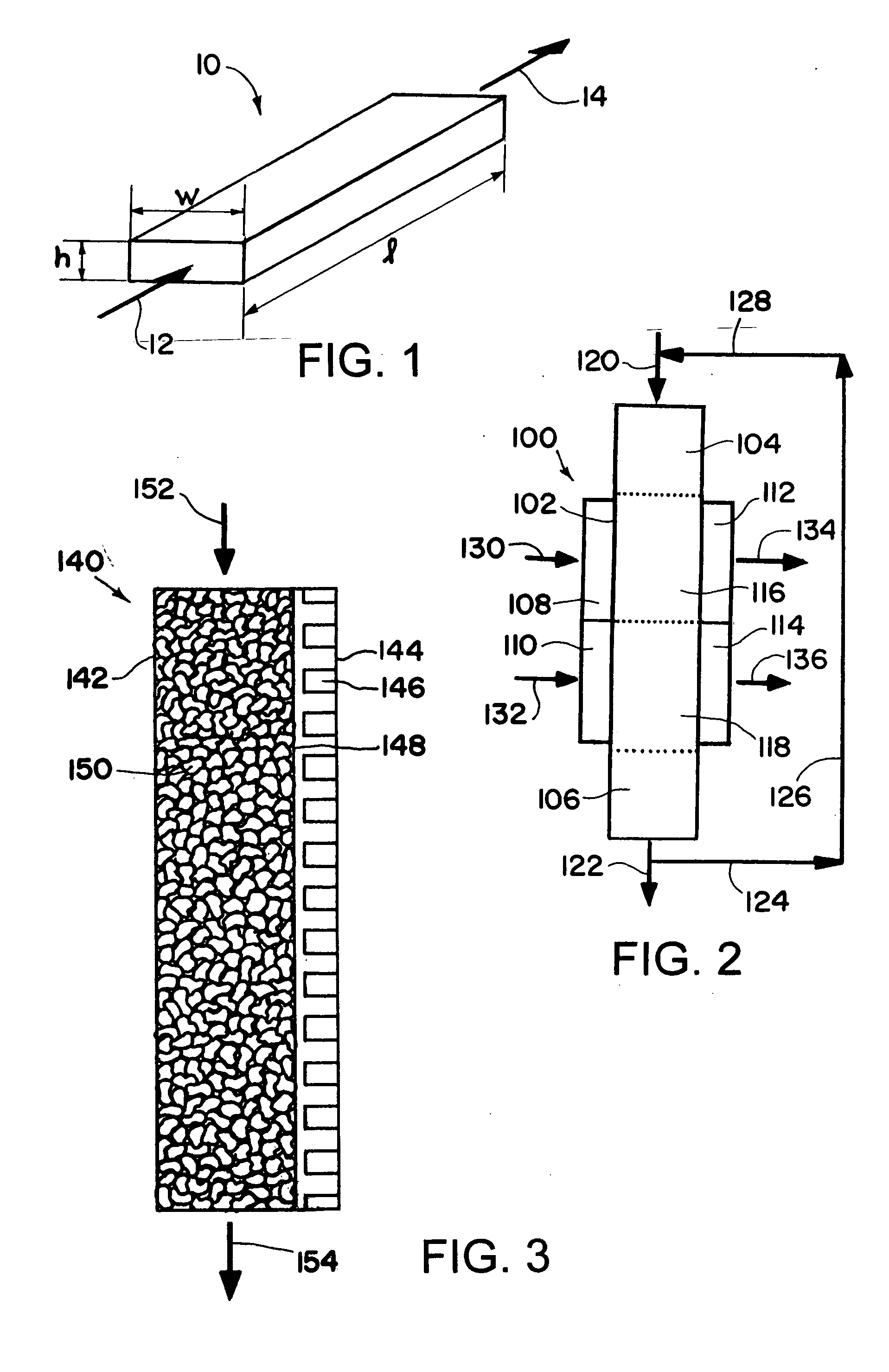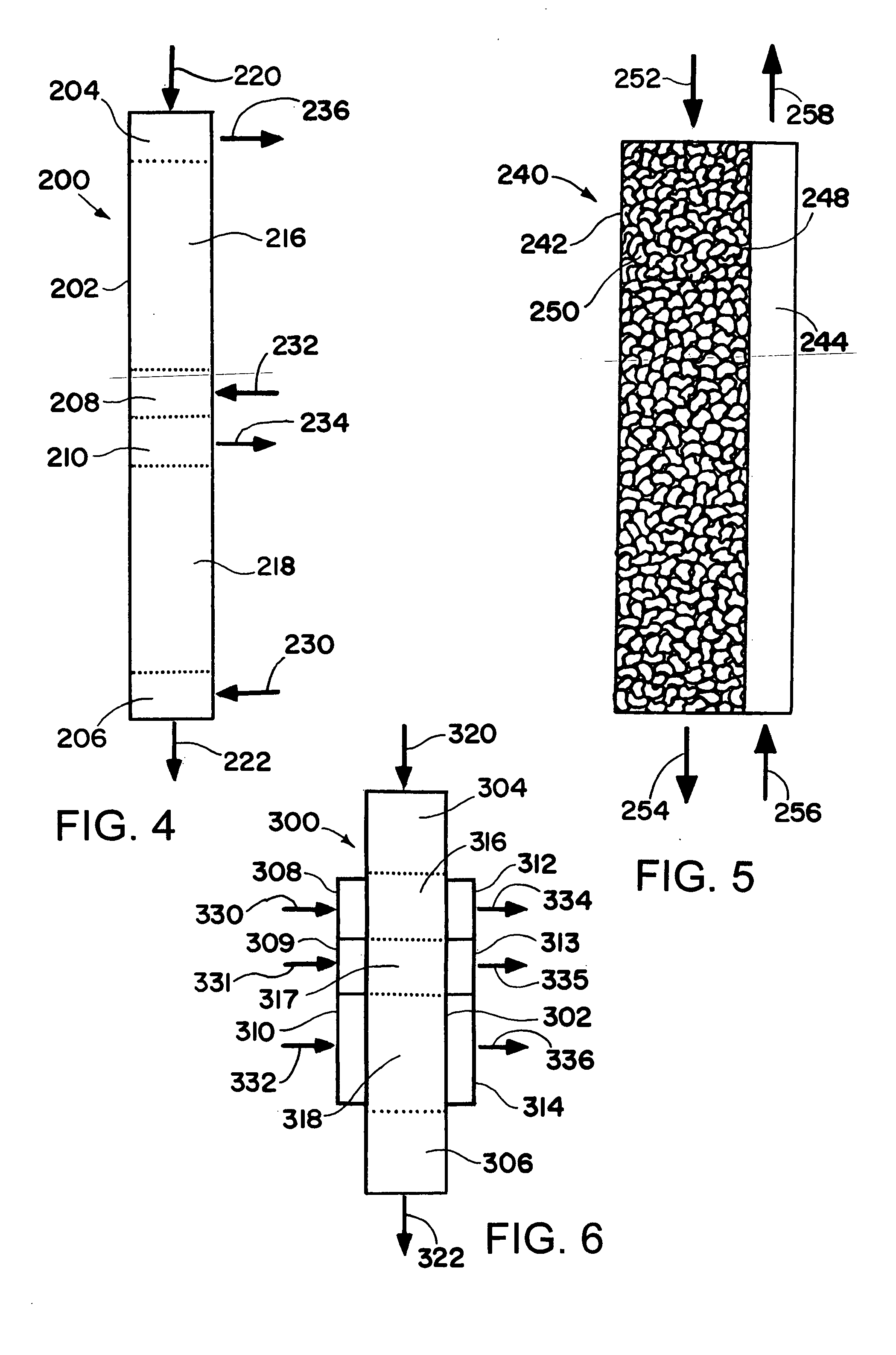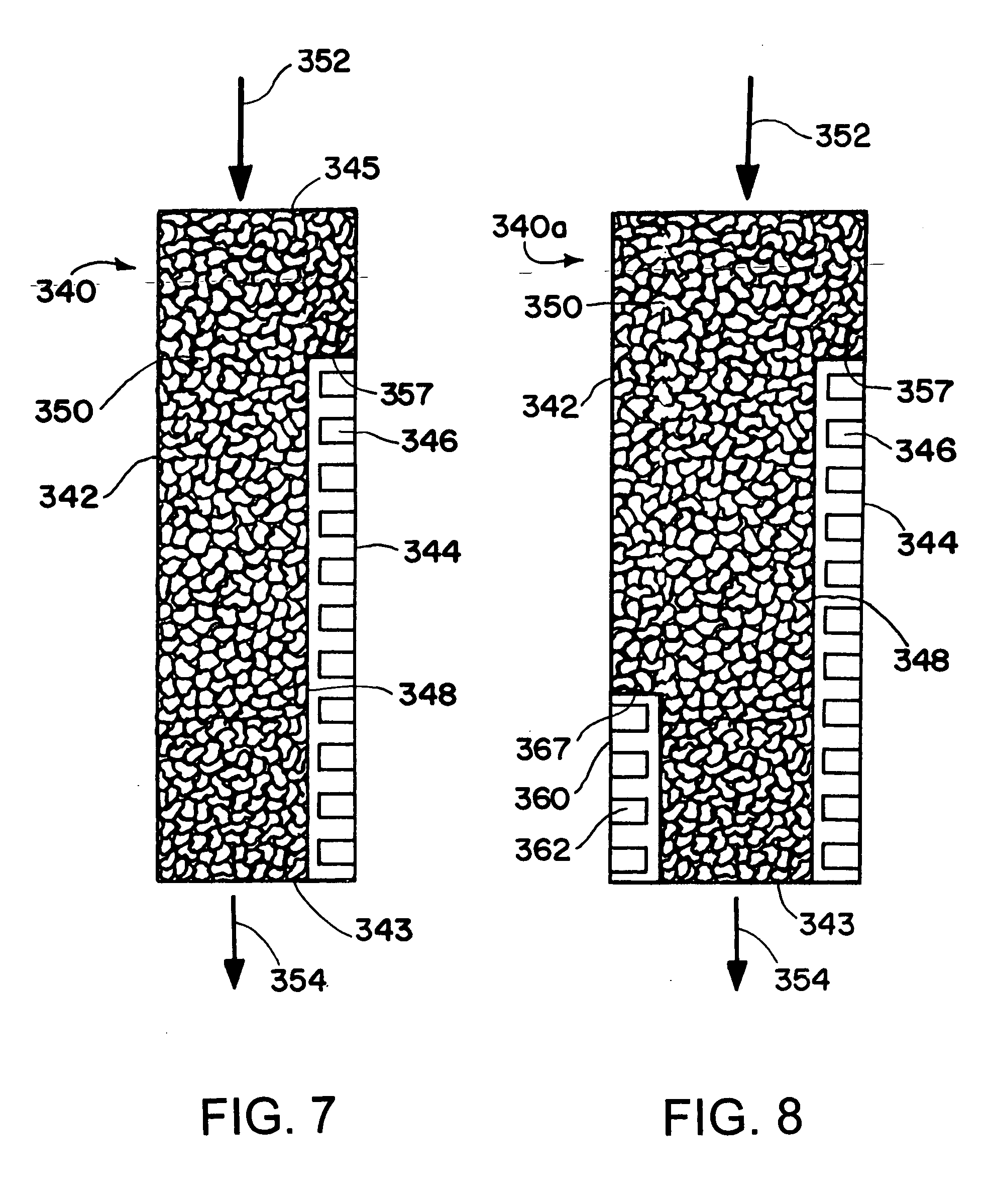Process for conducting an equilibrium limited chemical reaction using microchannel technology
a microchannel technology and chemical reaction technology, applied in the purification/separation of oxygen compounds, physical/chemical process catalysts, metal/metal-oxide/metal-hydroxide catalysts, etc., can solve the problem of increasing the rate of catalyst deactivation, high cost of methanol and dimethyl ether as “fuel” compared to other hydrocarbons, and product separation is difficult. problem, to achieve the effect of high surface-to-volume ratio, enhanced heat and mass transfer rate, and high product yield ratio
- Summary
- Abstract
- Description
- Claims
- Application Information
AI Technical Summary
Benefits of technology
Problems solved by technology
Method used
Image
Examples
example 1
[0182] The synthesis of methanol in a microchannel reactor is simulated using a two dimensional model following the procedure indicated below. The simulation is of a single catalyst containing process microchannel with an internal height 1.524 mm, an internal width of 1.27 cm and length of 15.24 cm. The simulation itself considers half of the channel and thus possesses an inlet flow boundary, an outlet flow boundary a heat transfer wall and a symmetry plan running down the axis lengthwise in the direction of flow. The heat transfer channel is not directly simulated and a temperature profile is imposed on the heat transfer wall. This profile has a maximum value of 280° C. and minimum value of 185° C. The methanol synthesis proceeds via the reactions outlined in Equations (1) and (2) and the rate expressions and catalyst properties are reported by the authors K. Vanden Bussche and G. Froment in their paper entitled “A Steady-State Kinetic Model for Methanol Synthesis and the Water Gas...
example 2
[0183] The synthesis of dimethyl ether is modeled in a microchannel reactor using the procedure indicated below. The microchannel reactor contains 100 parallel process microchannels, each of the process microchannels having an internal height of 3 mm, and internal width of 2 cm, and a length of 10 cm. Each of the process microchannels is packed with particulate solids comprising a mixture of a methanol synthesis catalyst comprising copper, zinc and aluminum oxides, and a dehydration catalyst comprising silica and alumina. The particulate solids have a medium particle diameter of about 100 microns. Each of the process microchannels are divided into two reaction zones. The length of the first reaction zone is 2 cm. The length of the second reaction zone is 8 cm. The temperature within each of the reaction zones is controlled by an adjacent heat exchanger. The temperature within the first reaction zone is 300° C. The temperature within the second reaction zone is 225° C. The reactant c...
PUM
| Property | Measurement | Unit |
|---|---|---|
| Temperature | aaaaa | aaaaa |
| Temperature | aaaaa | aaaaa |
| Temperature | aaaaa | aaaaa |
Abstract
Description
Claims
Application Information
 Login to View More
Login to View More - R&D
- Intellectual Property
- Life Sciences
- Materials
- Tech Scout
- Unparalleled Data Quality
- Higher Quality Content
- 60% Fewer Hallucinations
Browse by: Latest US Patents, China's latest patents, Technical Efficacy Thesaurus, Application Domain, Technology Topic, Popular Technical Reports.
© 2025 PatSnap. All rights reserved.Legal|Privacy policy|Modern Slavery Act Transparency Statement|Sitemap|About US| Contact US: help@patsnap.com



